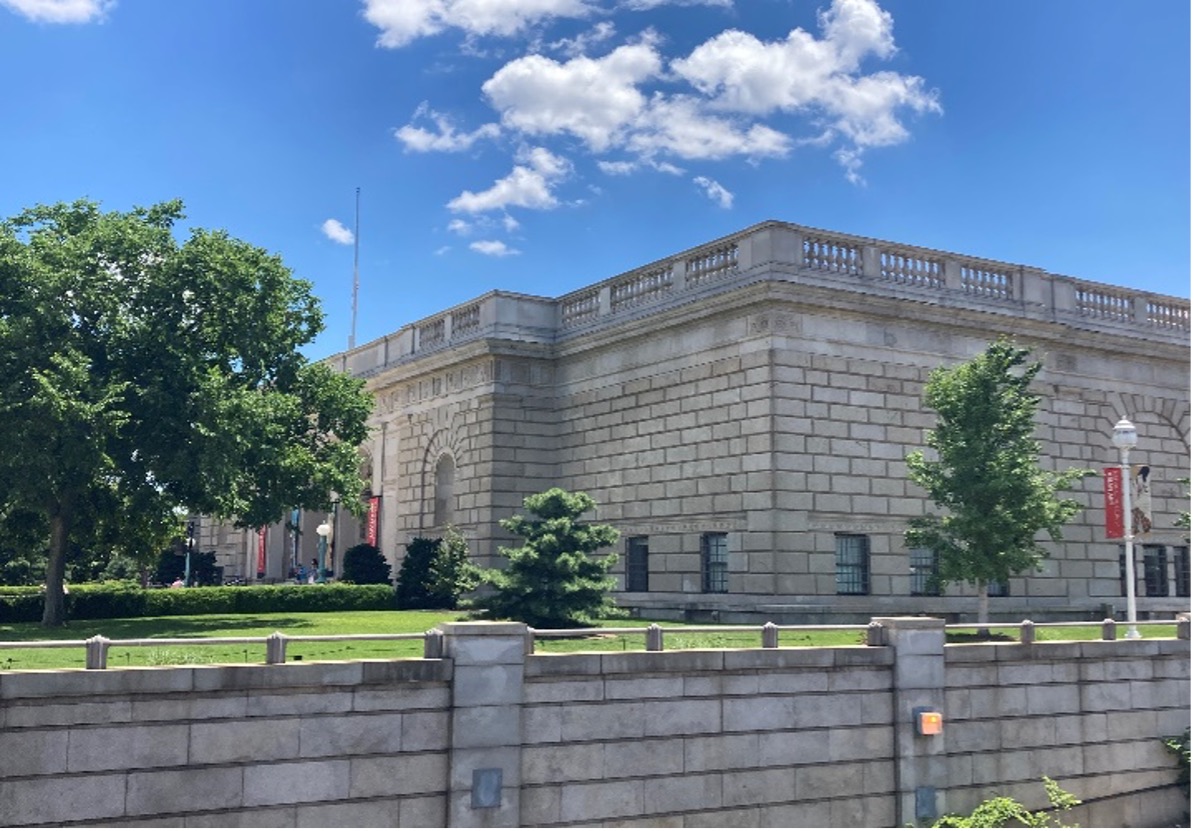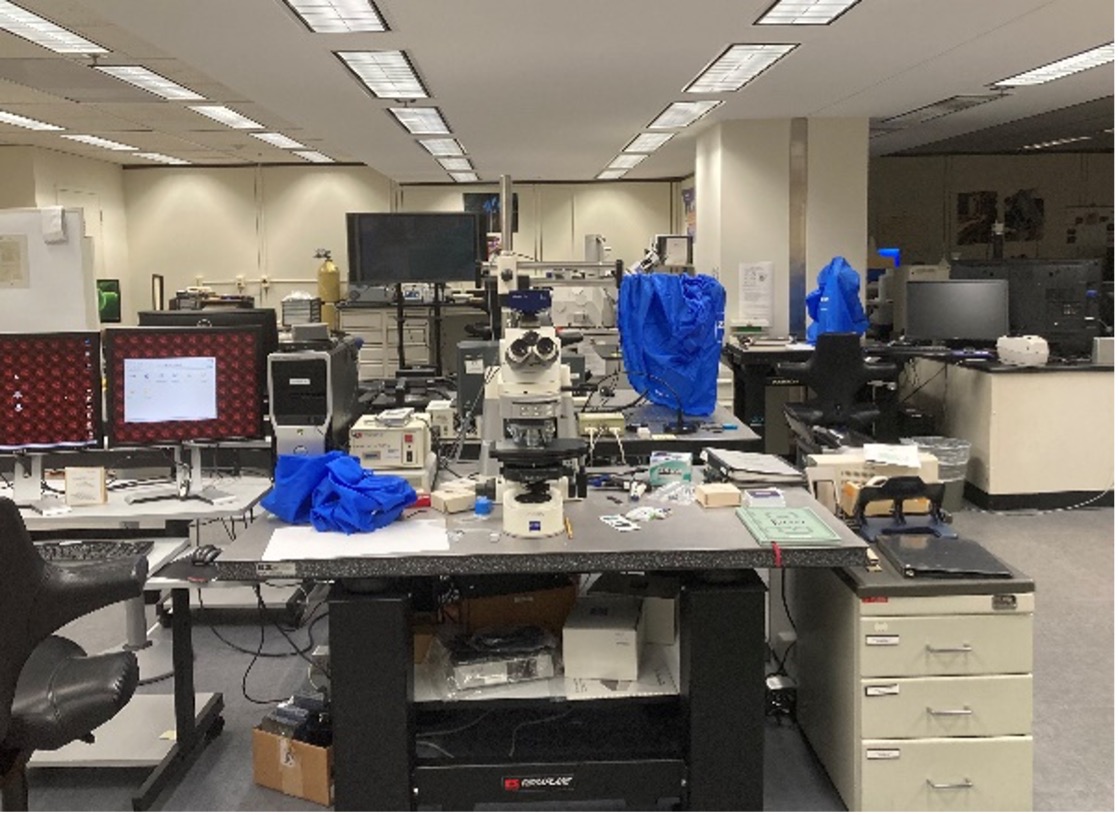Exploring Art Conservation in Washington DC Through the Downing Grant
History of Art Student Sophie Vogelsang travels to Washington, DC to explore art conservation.
As a double major in chemistry and history of art, I am fascinated by art conservation which combines my passions for science and art. This fall, I am entering a PhD program in chemistry, and, in the future, I hope to apply my scientific skills to the research and preservation of art. Through the 2022 Downing Grant, I had the incredible opportunity to visit art conservation labs at the Freer | Sackler Galleries of the Smithsonian Institute and the Library of Congress in Washington, DC. This experience allowed me to explore the intersection between my two majors beyond what is possible in a typical classroom setting. I was able to see the labs and instrumentation used by art conservators and conservation scientists, learn about their research projects, and observe their work in-action and in-person. After more than two years of travel restrictions due to the COVID-19 pandemic, I was especially grateful to have the chance to visit these labs in-person. In fact, I was the first visitor at both labs since the start of the pandemic in 2020.


June 9th: Freer | Sackler Galleries of the Smithsonian Institute
After a quick and beautiful walk through the National Mall, I arrived at the steps of the Freer Gallery, part of the National Museum of Asian Art. Once inside, I was led through a brief tour of the gallery spaces by one of the art conservators. During my loop through the exhibitions, I had an unexpected and exciting opportunity to slip behind a security barrier and enter the Peacock Room, painted by James Whistler for Charles Lang Freer, which was closed off to the public to undergo restoration. Inside the room, the breathtaking blue and gold paintings coating the walls and ceiling were juxtaposed with the industrial equipment of a team of two art conservators who had begun work on the restoration of decorative vent covers on the floor.
 I was then taken downstairs to tour the art conservation department. I explored the Chinese and Japanese painting conservation labs, paper conservation labs, and research labs for conservation scientists. In the lab spaces, I was able to see the instruments and art conservators and talk to one of the conservation scientists about their research projects. At the end of my visit, I attended an in-person forum on Korean art in the United States alongside some members of the conservation department. The forum included captivating discussions from curators at museums such as the MET, MFA Boston, and Art Institute of Chicago, giving me a further glimpse into the work of museum employees.
I was then taken downstairs to tour the art conservation department. I explored the Chinese and Japanese painting conservation labs, paper conservation labs, and research labs for conservation scientists. In the lab spaces, I was able to see the instruments and art conservators and talk to one of the conservation scientists about their research projects. At the end of my visit, I attended an in-person forum on Korean art in the United States alongside some members of the conservation department. The forum included captivating discussions from curators at museums such as the MET, MFA Boston, and Art Institute of Chicago, giving me a further glimpse into the work of museum employees.
June 10th: Preservation Research and Testing Division of the Library of Congress
The next day, I headed to the Library of Congress to visit the laboratories of the Preservation Research and Testing Division. As the largest library in the world, the Library of Congress boasts an enormous collection of over 173 million items and occupies three buildings (Thomas Jefferson, James Madison, and John Adams buildings) at the heart of Washington DC. After climbing the hill up from the Capitol South Metro Station, I was met with impressive views of the United States Capitol and Thomas Jefferson building.
 Turning to the right, I entered the James Madison building and was led down to the lab spaces by one of the preservation scientists. During my time in the labs, I was able to see instrumentation, learn about active research projects, and observe conservation work. In the wet lab, there were a variety of scientific instruments for chemical testing of collections items and research projects. Drying racks in one chemical hood were filled with paint samples created using various colorants and binding media to be used as references for identifying pigments. Down in the lower level laboratory, there were numerous instruments for imaging and spectroscopic techniques often used to study and identify materials. One project involved using X-ray fluorescence spectroscopy to determine the pigments in a painted book. Over in the conservation labs, I saw a beautiful Buddhist thangka which was being prepared for exhibition and had undergone microfade testing to evaluate the light sensitivity of the pigments and fabrics.
Turning to the right, I entered the James Madison building and was led down to the lab spaces by one of the preservation scientists. During my time in the labs, I was able to see instrumentation, learn about active research projects, and observe conservation work. In the wet lab, there were a variety of scientific instruments for chemical testing of collections items and research projects. Drying racks in one chemical hood were filled with paint samples created using various colorants and binding media to be used as references for identifying pigments. Down in the lower level laboratory, there were numerous instruments for imaging and spectroscopic techniques often used to study and identify materials. One project involved using X-ray fluorescence spectroscopy to determine the pigments in a painted book. Over in the conservation labs, I saw a beautiful Buddhist thangka which was being prepared for exhibition and had undergone microfade testing to evaluate the light sensitivity of the pigments and fabrics.

This trip was an incredibly insightful sneak peek into the lab spaces where art pieces undergo conservation, scientific testing, and research. I’m very thankful to the Vanderbilt Department of History of Art and Architecture, the Downing Family, and Professor Susan Dine for making this amazing opportunity possible.